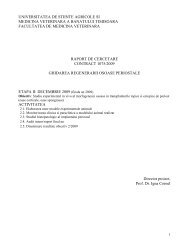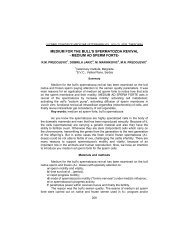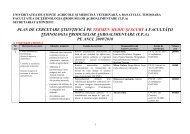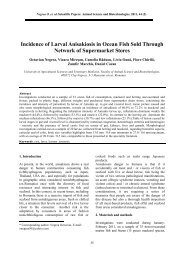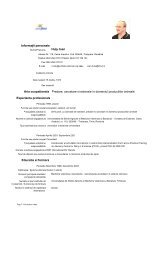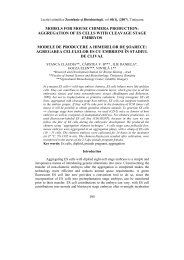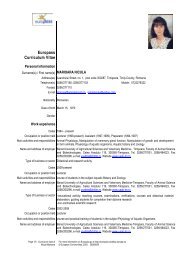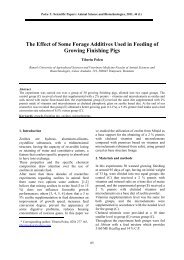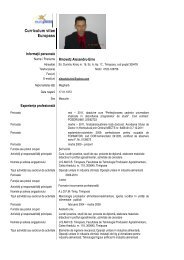journal of linguistic studies
journal of linguistic studies
journal of linguistic studies
You also want an ePaper? Increase the reach of your titles
YUMPU automatically turns print PDFs into web optimized ePapers that Google loves.
interview (except while closing the interview). With this type <strong>of</strong> opening, the audience is<br />
introduced into the interview more dynamically and is only reminded <strong>of</strong> the function <strong>of</strong><br />
the politician in question. Implicit introductions are used quite <strong>of</strong>ten (72.7%) and are<br />
sometimes combined with direct introductions. The vocatives usually perform the role <strong>of</strong><br />
boundary markers, marking the division between the opening and the first topic cycle.<br />
Headline – This move announces the topic <strong>of</strong> the interview, usually in a summarily<br />
fashion. British interviewers are very formal and serious and they rarely use preheadlines,<br />
i.e. riddles couched in questions with the aim <strong>of</strong> attracting the attention and the interest <strong>of</strong><br />
the audience:<br />
(4) (B 3) INTERVIEWER: …All the big business news stories in a moment,<br />
first this evening’s breaking news, the resignation in the past hour <strong>of</strong> Sir Menzies<br />
Campbell. He says questions about leadership were getting in the way <strong>of</strong> a party’s<br />
progress, the Liberal Democrat’s top brass said he jumped but was he pushed? …<br />
A number <strong>of</strong> openings do not have this move, however. Such is the case with the<br />
interviews in which the interviewee is more important than the topic, i.e. in which the<br />
interviewer uses the opportunity to cover as many topics as possible with an important<br />
guest. The interview is then conducted through a series <strong>of</strong> topic cycles, each with its own<br />
opening, i.e. its headline. The question after the opening introduces the first topic, which<br />
usually determines the tenor for the rest <strong>of</strong> the interview:<br />
(5) (B 6) INTERVIEWER: Margaret Beckett joins me now. Welcome Foreign<br />
Secretary.<br />
MARGARET BECKETT: Thank you.<br />
INTERVIEWER: Let’s start with the inevitable - Iraq. The American surge <strong>of</strong><br />
troops into Baghdad is really a last throw <strong>of</strong> the cards isn’t it?<br />
The moves interviewee introduction and the headline are addressed to the audience,<br />
which is why they resemble monologues and the <strong>journal</strong>ist is facing the camera, the<br />
procedure which is repeated at the closure <strong>of</strong> an interview. This makes the interview a<br />
type <strong>of</strong> what Fairclough & Chourliaraki (1999) call mediated quasi-interaction. This<br />
move is mostly accomplished through the third personal singular or impersonally, which<br />
additionally supports the supposition that openings <strong>of</strong> everyday conversation differ in<br />
many respects in relation to quasi-interaction openings. All the facts point to the<br />
conclusion that a political interview is a type <strong>of</strong> institutional talk strongly governed by<br />
conventions. The interviewer, <strong>of</strong> course, can use the conventions creatively to a certain<br />
extent, which means that they can choose between nondiscriminative strategies <strong>of</strong> how to<br />
present the topic and the interviewee (see Bhatia 1993).<br />
Initial component – This move refers to an exchange <strong>of</strong> greetings and is realised<br />
through an adjacency pair welcoming – thanking or greeting – thanking:<br />
(6) (B 3) INTERVIEWER: Mr Cable, good evening.<br />
VINCE CABLE: Thank you.<br />
The pattern is usually not complete, because the <strong>journal</strong>ist does not leave space after<br />
the greeting for the other element <strong>of</strong> the adjacency pair and proceeds to questioning<br />
instead:<br />
72



